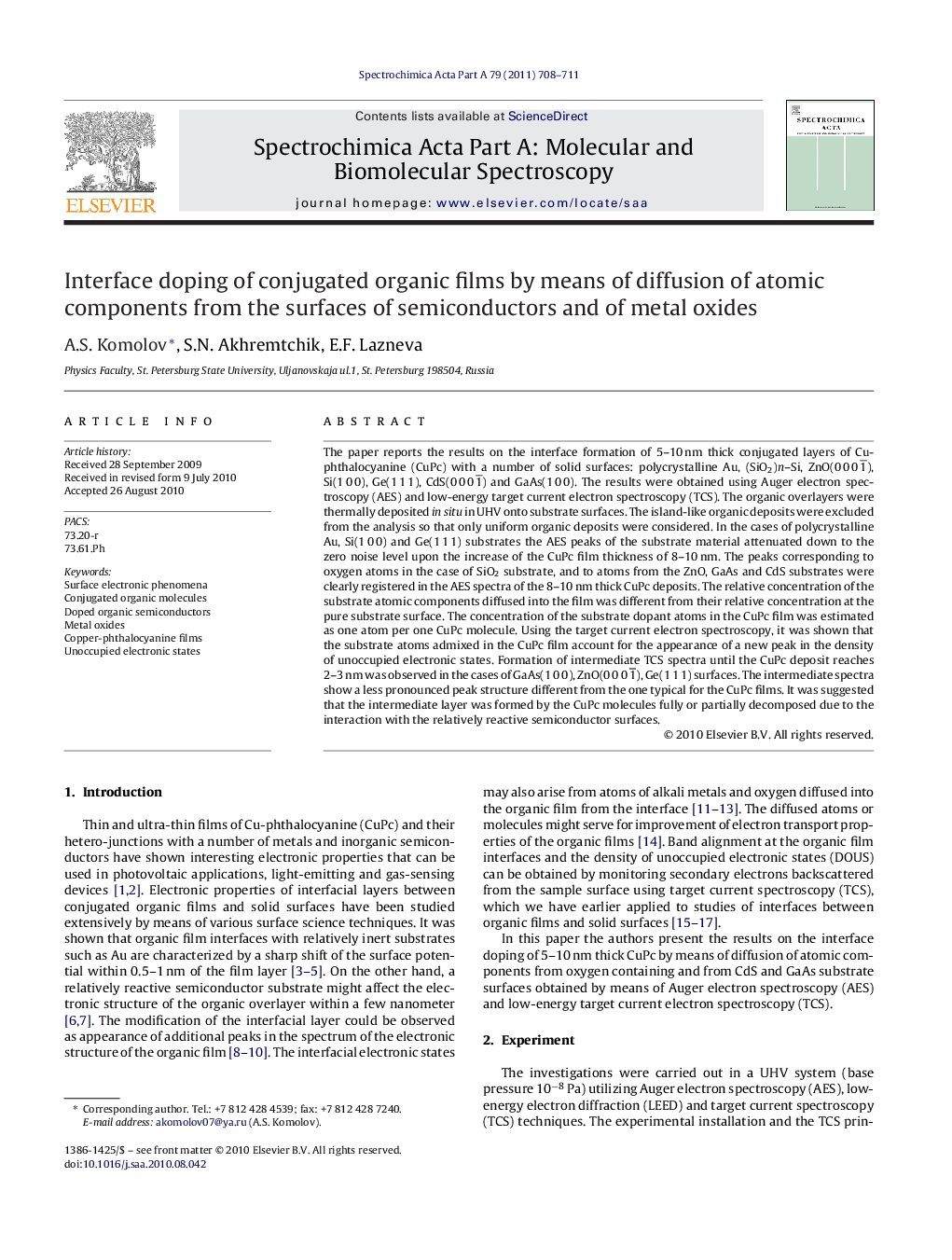| کد مقاله | کد نشریه | سال انتشار | مقاله انگلیسی | نسخه تمام متن |
|---|---|---|---|---|
| 1232927 | 968799 | 2011 | 4 صفحه PDF | دانلود رایگان |

The paper reports the results on the interface formation of 5–10 nm thick conjugated layers of Cu-phthalocyanine (CuPc) with a number of solid surfaces: polycrystalline Au, (SiO2)n –Si, ZnO(0 0 0 1¯), Si(1 0 0), Ge(1 1 1), CdS(0 0 0 1¯) and GaAs(1 0 0). The results were obtained using Auger electron spectroscopy (AES) and low-energy target current electron spectroscopy (TCS). The organic overlayers were thermally deposited in situ in UHV onto substrate surfaces. The island-like organic deposits were excluded from the analysis so that only uniform organic deposits were considered. In the cases of polycrystalline Au, Si(1 0 0) and Ge(1 1 1) substrates the AES peaks of the substrate material attenuated down to the zero noise level upon the increase of the CuPc film thickness of 8–10 nm. The peaks corresponding to oxygen atoms in the case of SiO2 substrate, and to atoms from the ZnO, GaAs and CdS substrates were clearly registered in the AES spectra of the 8–10 nm thick CuPc deposits. The relative concentration of the substrate atomic components diffused into the film was different from their relative concentration at the pure substrate surface. The concentration of the substrate dopant atoms in the CuPc film was estimated as one atom per one CuPc molecule. Using the target current electron spectroscopy, it was shown that the substrate atoms admixed in the CuPc film account for the appearance of a new peak in the density of unoccupied electronic states. Formation of intermediate TCS spectra until the CuPc deposit reaches 2–3 nm was observed in the cases of GaAs(1 0 0), ZnO(0 0 0 1¯), Ge(1 1 1) surfaces. The intermediate spectra show a less pronounced peak structure different from the one typical for the CuPc films. It was suggested that the intermediate layer was formed by the CuPc molecules fully or partially decomposed due to the interaction with the relatively reactive semiconductor surfaces.
Journal: Spectrochimica Acta Part A: Molecular and Biomolecular Spectroscopy - Volume 79, Issue 4, 15 August 2011, Pages 708–711